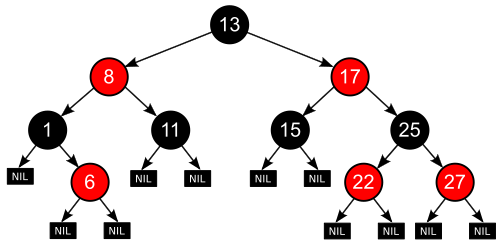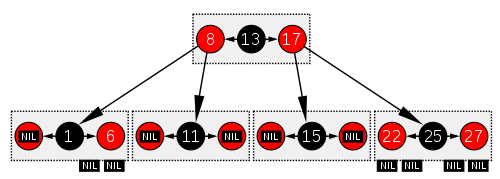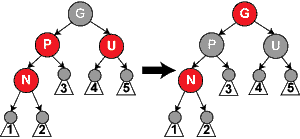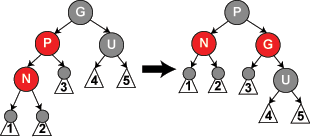A Memory Allocator
by Doug Lea[A German adaptation and translation of this article appears in unix/mail December, 1996. This article is now out of date, and doesn't reflect details of current version of malloc.]
Introduction
Memory allocators form interesting case studies in the engineering of infrastructure software. I started writing one in 1987, and have maintained and evolved it (with the help of many volunteer contributors) ever since. This allocator provides implementations of the the standard C routinesmalloc(), free(), and realloc(), as well as a few auxiliary utility routines. The allocator has never been given a specific name. Most people just call it Doug Lea's Malloc, or dlmalloc for short. The code for this allocator has been placed in the public domain (available from ftp://g.oswego.edu/pub/misc/malloc.c), and is apparently widely used: It serves as the default native version of malloc in some versions of Linux; it is compiled into several commonly available software packages (overriding the native malloc), and has been used in various PC environments as well as in embedded systems, and surely many other places I don't even know about.
I wrote the first version of the allocator after writing some C++ programs that almost exclusively relied on allocating dynamic memory. I found that they ran much more slowly and/or with much more total memory consumption than I expected them to. This was due to characteristics of the memory allocators on the systems I was running on (mainly the then-current versions of SunOs and BSD ). To counter this, at first I wrote a number of special-purpose allocators in C++, normally by overloading
operator new for various classes. Some of these are described in a paper on C++ allocation techniques that was adapted into the 1989 C++ Report article Some storage allocation techniques for container classes. However, I soon realized that building a special allocator for each new class that tended to be dynamically allocated and heavily used was not a good strategy when building kinds of general-purpose programming support classes I was writing at the time. (From 1986 to 1991, I was the the primary author of libg++ , the GNU C++ library.) A broader solution was needed -- to write an allocator that was good enough under normal C++ and C loads so that programmers would not be tempted to write special-purpose allocators except under very special conditions.
This article presents a description of some of the main design goals, algorithms, and implementation considerations for this allocator. More detailed documentation can be found with the code distribution.
Goals
A good memory allocator needs to balance a number of goals:- Maximizing Compatibility
- An allocator should be plug-compatible with others; in particular it should obey ANSI/POSIX conventions.
- Maximizing Portability
- Reliance on as few system-dependent features (such as system calls) as possible, while still providing optional support for other useful features found only on some systems; conformance to all known system constraints on alignment and addressing rules.
- Minimizing Space
- The allocator should not waste space: It should obtain as little memory from the system as possible, and should maintain memory in ways that minimize fragmentation -- ``holes''in contiguous chunks of memory that are not used by the program.
- Minimizing Time
- The
malloc(),free()andreallocroutines should be as fast as possible in the average case. - Maximizing Tunability
- Optional features and behavior should be controllable by users either statically (via
#defineand the like) or dynamically (via control commands such asmallopt). - Maximizing Locality
- Allocating chunks of memory that are typically used together near each other. This helps minimize page and cache misses during program execution.
- Maximizing Error Detection
- It does not seem possible for a general-purpose allocator to also serve as general-purpose memory error testing tool such as Purify. However, allocators should provide some means for detecting corruption due to overwriting memory, multiple frees, and so on.
- Minimizing Anomalies
- An allocator configured using default settings should perform well across a wide range of real loads that depend heavily on dynamic allocation -- windowing toolkits, GUI applications, compilers, interpretors, development tools, network (packet)-intensive programs, graphics-intensive packages, web browsers, string-processing applications, and so on.
As they discuss, minimizing space by minimizing wastage (generally due to fragmentation) must be the primary goal in any allocator.
For an extreme example, among the fastest possible versions of
malloc() is one that always allocates the next sequential memory location available on the system, and the corresponding fastest version of free() is a no-op. However, such an implementation is hardly ever acceptable: it will cause a program to run out of memory quickly since it never reclaims unused space. Wastages seen in some allocators used in practice can be almost this extreme under some loads. As Wilson also notes, wastage can be measured monetarily: Considered globally, poor allocation schemes cost people perhaps even billions of dollars in memory chips. While time-space issues dominate, the set of trade-offs and compromises is nearly endless. Here are just a few of the many examples:
- Accommodating worst-case alignment requirements increases wastage by forcing the allocator to skip over bytes in order to align chunks.
- Most provisions for dynamic tunability (such as setting a debug mode) can seriously impact time efficiency by adding levels of indirection and increasing numbers of branches.
- Some provisions designed to catch errors limit range of applicability. For example, previously to version 2.6.6, regardless of platform, malloc internally handled allocation size arguments as if they were signed 32-bit integers, and treats nonpositive arguments as if they were requests for a size of zero. (However, as of V2.6.6, negative arguments result in null failure returns, to comply to POSIX standards.)
- Accommodating the oddities of other allocators to remain plug-compatible with them can reduce flexibility and performance. For the oddest example, some early versions of Unix allocators allowed programmers to
reallocmemory that had already beenfreed. Until 1993, I allowed this for the sake of compatibility. (However, no one at all complained when this ``feature'' was dropped.) - Some (but by no means all) heuristics that improve time and/or space for small programs cause unacceptably worse time and/or space characteristics for larger programs that dominate the load on typical systems these days.
- Empirical studies of malloc performance by others (including the above-mentioned paper by Wilson et al, as well as others that it in turn cites). These papers find that versions of this malloc increasingly rank as simultaneously among the most time- and space-efficient memory allocators available. However, each reveals weaknesses or opportunities for further improvements.
- Changes in target workloads. The nature of the kinds of programs that are most sensitive to malloc implementations continually change. For perhaps the primary example, the memory characteristics of X and other windowing systems increasingly dominate.
- Changes in systems and processors. Implementation details and fine-tunings that try to make code readily optimizable for typical processors change across time. Additionally, operating systems (including Linux and Solaris) have themselves evolved, for example to make memory mapping an occasionally-wise choice for system-level allocation.
- Suggestions, experience reports, and code from users and contributors. The code has evolved with the help of several regular volunteer contributors. The majority of recent changes were instigated by people using the version supplied in Linux, and were implemented in large part by Wolfram Gloger for the Linux version and then integrated by me.
Algorithms
The two core elements of the malloc algorithm have remained unchanged since the earliest versions:- Boundary Tags
- Chunks of memory carry around with them size information fields both before and after the chunk. This allows for two important capabilities:
- Two bordering unused chunks can be coalesced into one larger chunk. This minimizes the number of unusable small chunks.
- All chunks can be traversed starting from any known chunk in either a forward or backward direction.
 The original versions implemented boundary tags exactly in this fashion. More recent versions omit trailer fields on chunks that are in use by the program. This is itself a minor trade-off: The fields are not ever used while chunks are active so need not be present. Eliminating them decreases overhead and wastage. However, lack of these fields weakens error detection a bit by making it impossible to check if users mistakenly overwrite fields that should have known values.
The original versions implemented boundary tags exactly in this fashion. More recent versions omit trailer fields on chunks that are in use by the program. This is itself a minor trade-off: The fields are not ever used while chunks are active so need not be present. Eliminating them decreases overhead and wastage. However, lack of these fields weakens error detection a bit by making it impossible to check if users mistakenly overwrite fields that should have known values. - Binning
- Available chunks are maintained in bins, grouped by size. There are a surprisingly large number (128) of fixed-width bins, approximately logarithmically spaced in size. Bins for sizes less than 512 bytes each hold only exactly one size (spaced 8 bytes apart, simplifying enforcement of 8-byte alignment). Searches for available chunks are processed in smallest-first, best-fit order. As shown by Wilson et al, best-fit schemes (of various kinds and approximations) tend to produce the least fragmentation on real loads compared to other general approaches such as first-fit.
 Until the versions released in 1995, chunks were left unsorted within bins, so that the best-fit strategy was only approximate. More recent versions instead sort chunks by size within bins, with ties broken by an oldest-first rule. (This was done after finding that the minor time investment was worth it to avoid observed bad cases.)
Until the versions released in 1995, chunks were left unsorted within bins, so that the best-fit strategy was only approximate. More recent versions instead sort chunks by size within bins, with ties broken by an oldest-first rule. (This was done after finding that the minor time investment was worth it to avoid observed bad cases.)
This approach leads to fixed bookkeeping overhead per chunk. Because both size information and bin links must be held in each available chunk, the smallest allocatable chunk is 16 bytes in systems with 32-bit pointers and 24 bytes in systems with 64-bit pointers. These minimum sizes are larger than most people would like to see -- they can lead to significant wastage for example in applications allocating many tiny linked-list nodes. However, the 16 bytes minimum at least is characteristic of any system requiring 8-byte alignment in which there is any malloc bookkeeping overhead.
This basic algorithm can be made to be very fast. Even though it rests upon a search mechanism to find best fits, the use of indexing techniques, exploitation of special cases, and careful coding lead to average cases requiring only a few dozen instructions, depending of course on the machine and the allocation pattern.
While coalescing via boundary tags and best-fit via binning represent the main ideas of the algorithm, further considerations lead to a number of heuristic improvements. They include locality preservation, wilderness preservation, memory mapping, and caching.
Locality preservation
Chunks allocated at about the same time by a program tend to have similar reference patterns and coexistent lifetimes. Maintaining locality minimizes page faults and cache misses, which can have a dramatic effect on performance on modern processors. If locality were the only goal, an allocator might always allocate each successive chunk as close to the previous one as possible. However, this nearest-fit (often approximated by next-fit) strategy can lead to very bad fragmentation. In the current version of malloc, a version of next-fit is used only in a restricted context that maintains locality in those cases where it conflicts the least with other goals: If a chunk of the exact desired size is not available, the most recently split-off space is used (and resplit) if it is big enough; otherwise best-fit is used. This restricted use eliminates cases where a perfectly usable existing chunk fails to be allocated; thus eliminating at least this form of fragmentation. And, because this form of next-fit is faster than best-fit bin-search, it speeds up the averagemalloc. Wilderness Preservation
The ``wilderness'' (so named by Kiem-Phong Vo) chunk represents the space bordering the topmost address allocated from the system. Because it is at the border, it is the only chunk that can be arbitrarily extended (viasbrk in Unix) to be bigger than it is (unless of course sbrk fails because all memory has been exhausted). One way to deal with the wilderness chunk is to handle it about the same way as any other chunk. (This technique was used in most versions of this malloc until 1994). While this simplifies and speeds up implementation, without care it can lead to some very bad worst-case space characteristics: Among other problems, if the wilderness chunk is used when another available chunk exists, you increase the chances that a later request will cause an otherwise preventable sbrk. A better strategy is currently used: treat the wilderness chunk as ``bigger'' than all others, since it can be made so (up to system limitations) and use it as such in a best-first scan. This results in the wilderness chunk always being used only if no other chunk exists, further avoiding preventable fragmentation.
Memory Mapping
In addition to extending general-purpose allocation regions viasbrk, most versions of Unix support system calls such as mmap that allocate a separate non-contiguous region of memory for use by a program. This provides a second option within malloc for satisfying a memory request. Requesting and returning a mmaped chunk can further reduce downstream fragmentation, since a released memory map does not create a ``hole'' that would need to be managed. However, because of built-in limitations and overheads associated with mmap, it is only worth doing this in very restricted situations. For example, in all current systems, mapped regions must be page-aligned. Also, invoking mmap and mfree is much slower than carving out an existing chunk of memory. For these reasons, the current version of malloc relies on mmap only if (1) the request is greater than a (dynamically adjustable) threshold size (currently by default 1MB) and (2) the space requested is not already available in the existing arena so would have to be obtained via sbrk. In part because
mmap is not always applicable in most programs, the current version of malloc also supports trimming of the main arena, which achieves one of the effects of memory mapping -- releasing unused space back to the system. When long-lived programs contain brief peaks where they allocate large amounts of memory, followed by longer valleys where the have more modest requirements, system performance as a whole can be improved by releasing unused parts of the wilderness chunk back to the system. (In nearly all versions of Unix, sbrk can be used with negative arguments to achieve this effect.) Releasing space allows the underlying operating system to cut down on swap space requirements and reuse memory mapping tables. However, as with mmap, the call itself can be expensive, so is only attempted if trailing unused memory exceeds a tunable threshold. Caching
In the most straightforward version of the basic algorithm, each freed chunk is immediately coalesced with neighbors to form the largest possible unused chunk. Similarly, chunks are created (by splitting larger chunks) only when explicitly requested.Operations to split and to coalesce chunks take time. This time overhead can sometimes be avoided by using either of both of two caching strategies:
- Deferred Coalescing
- Rather than coalescing freed chunks, leave them at their current sizes in hopes that another request for the same size will come along soon. This saves a coalesce, a later split, and the time it would take to find a non-exactly-matching chunk to split.
- Preallocation
- Rather than splitting out new chunks one-by one, pre-split many at once. This is normally faster than doing it one-at-a-time.
malloc, free, or realloc, corresponding caching heuristics are easy to apply. The effectiveness of caching obviously depends on the costs of splitting, coalescing, and searching relative to the work needed to track cached chunks. Additionally, effectiveness less obviously depends on the policy used in deciding when to cache versus coalesce them. . Caching can be a good idea in programs that continuously allocate and release chunks of only a few sizes. For example, if you write a program that allocates and frees many tree nodes, you might decide that is worth it to cache some nodes, assuming you know of a fast way to do this. However, without knowledge of the program,
malloc cannot know whether it would be a good idea to coalesce cached small chunks in order to satisfy a larger request, or whether that larger request should be taken from somewhere else. And it is difficult for the allocator to make more informed guesses about this matter. For example, it is just as costly for an allocator to determine how much total contiguous space would be gained by coalescing chunks as it would be to just coalesce them and then resplit them. Previous versions of the allocator used a few search-ordering heuristics that made adequate guesses about caching, although with occasionally bad worst-case results. But across time, these heuristics appear to be decreasingly effective under real loads. This is probably because actual programs that rely heavily on malloc increasingly tend to use a larger variety of chunk sizes. For example, in C++ programs, this probably corresponds to a trend for programs to use an increasing number of classes. Different classes tend to have different sizes.
[Note: More recent versions of malloc DO cache, but only small chunks.]
Lookasides
There remains one kind of caching that is highly desirable in some applications but not implemented in this allocator -- lookasides for very small chunks. As mentioned above, the basic algorithm imposes a minimum chunk size that can be very wasteful for very small requests. For example, a linked list on a system with 4-byte pointers might allocate nodes holding only, say, two pointers, requiring only 8 bytes. Since the minimum chunk size is 16 bytes, user programs allocating only list nodes suffer 100% overhead.Eliminating this problem while still maintaining portable alignment would require that the allocator not impose any overhead. Techniques for carrying this out exist. For example, chunks could be checked to see if they belong to a larger aggregated space via address comparisons. However, doing so can impose significant costs; in fact the cost would be unacceptable in this allocator. Chunks are not otherwise tracked by address, so unless arbitrarily limited, checking might lead to random searches through memory. Additionally, support requires the adoption of one or more policies controlling whether and how to ever coalesce small chunks.
Such issues and limitations lead to one of the very few kinds of situations in which programmers should routinely write their own special purpose memory management routines (by, for example in C++ overloading
operator new()). Programs relying on large but approximately known numbers of very small chunks may find it profitable to build very simple allocators. For example, chunks can be allocated out of a fixed array with an embedded freelist, along with a provision to rely on malloc as a backup if the array becomes exhausted. Somewhat more flexibly, these can be based on the C or C++ versions of obstack available with GNU gcc and libg++.










